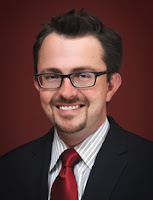Gareth Hammond, M.D.Orthopedic Surgeon
Member: American Academy of Orthopedic Surgeons
& California Orthopaedic Association
Professional Work History
Private Practice, January 2012 to present | Durango
Colorado
- Greater Long Beach Orthopaedic Medical and Surgical Group
Dr. Gareth Hammond is a board-certified orthopaedic surgeon with fellowship training in sports medicine, arthroscopy, and upper extremity reconstruction. He specializes in athletic injuries and arthritis, with a particular interest in shoulder, elbow, and knee arthroscopic and reconstructive surgery. His expertise includes direct anterior hip replacement, patient matched total knee replacement, as well as advanced treatment for early cartilage disease. He has published and presented his research interests which include shoulder biomechanics, ligament reconstruction, blood preservation during total joint replacement, and implant design for partial shoulder joint replacement.
Cartilage Restoration
Articular Cartilage is the white tissue lining the end of bones where these bones connect to form joints. Cartilage acts as cushioning material and helps in smooth gliding of bones during movement. An injury to the joint may damage this cartilage which cannot repair on its own. Cartilage can be damaged with increasing age, normal wear and tear, or trauma. Damaged cartilage cannot cushion the joints during movement and the joints may rub over each other causing severe pain and inflammation.
- Microfracture: In this method numerous holes are created in the injured joint surface using a sharp tool. This procedure stimulates healing response by creating new blood supply. Blood supply results in growth of new cartilage.
- Drilling: In this method a drilling instrument is used to create holes in the injured joint surface. Drilling holes creates blood supply and stimulate growth of new cartilage. Although the method is similar to microfracture, it is less precise and the heat produced during drilling may damage other tissues.
- Abrasion Arthroplasty: High speed metal-like object is used to remove the damaged cartilage. This procedure is performed using an arthroscope.
- Osteochondral Autograft Transplantation: Healthy cartilage tissue (graft) is taken from the bone that bears less weight and is transferred to the injured joint place. This method is used for smaller cartilage defects.
Click here to know more about Cartilage Restoration .
Shoulder
Normal Anatomy of the Shoulder Joint
How does the Shoulder joint work?
Shoulder Arthroscopy
Shoulder arthroscopy is a surgical procedure in which an arthroscope is inserted into the shoulder joint. The benefits of arthroscopy are smaller incisions, faster healing, a more rapid recovery, and less scarring. Arthroscopic surgical procedures are often performed on an outpatient basis and the patient is able to return home on the same day.
Frozen Shoulder
Frozen shoulder is the condition of painful shoulder limiting the movements because of pain and inflammation. It is also called as adhesive capsulitis and may progress to the state where an individual may feel very hard to move the shoulder.
- Shoulder Joint Replacement
Shoulder joint replacements are usually done to relieve pain and when all non-operative treatment to relieve pain have failed.
| If you have an orthopaedic condition and wish to be advised on the most appropriate treatment, please call (970) 259-3020 to schedule an appointment |
